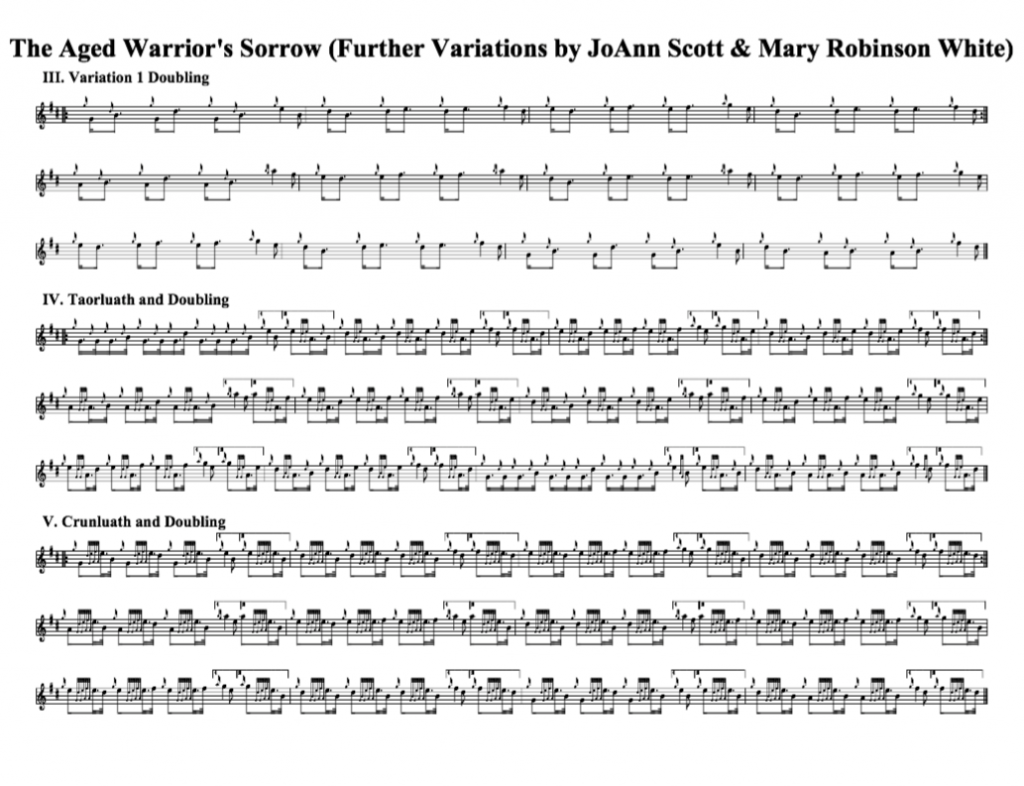At Invermark Piping School (2015), Jack Lee presented a variety of short pibrochs to students. They included Aged Warriors Sorrow, Sister’s Lament, The Pretty Dirk and two Nameless tunes.
He asked the students to choose a tune for which they would then compose additional motions, as an exercise in musical creativity.
From the manuscript evidence of the primary sources, it is clear that motions were ordered, added and removed randomly, but NOT according to the “whim” of the piper; rather, according to the feedback of the audience the piper would receive during the performance. It is this spontaneity and creativity that Jack’s suggestion was meant to foster.
Improvisation is a tall order, though it seems reasonable to suggest that a reasonably good pibroch player could and should be able to do so. After all, many pipers certainly know how to riff off of various light music idioms (think “kitchen piping”). Why not encourage improvisation on the Big Music?
For us, not being quite up to the task around the table in front of Jack, the next best thing was to take the tune, retreat to a picnic table and bang something out on paper.
The results, we believe, are beautiful, unexpected and worth sharing here.
PDF here: Aged Warrior’s Sorrow
Other variations were created, with a different approach (mimicking a more ancient style in movements and motifs):
We hope you enjoy these new contributions to the living art of pibroch. Perhaps they will inspire you to take up your pen and pipe and explore the potential of the many overlooked “short tunes” we have in our repertoire!
With much thanks to Jack Lee, Mary Robinson White and JoAnn Scott!

You really posted this! It was a great class and fun to put these variations together. There is a cadence in the next to the last bar of the taorlauth singling which should only be E to a B (no cadence). We also worked up an Amach to this, but didn’t print it out. We did that because there were so many D’s and B’s. It would make this relatively short initial tune into a very long revised tune. I hope we can do something similar next year.
I have done exercises like this with my students, though we never wrote it down like this. I think that the urlar repeats have a valuable function here, giving the performer a break while they consider how to handle the next variation.
It’s fun also to take a well-known air and try to extract a note row from it to use for building variations.
My thoughts are:
1) such an exercise is really important for students of pibroch, to help reinforce understanding of all the available options for motions
2) such an exercise helps students of pibroch immerse themselves into the *productive* dimensions of musicianship
3) such an exercise may create a rendition of a long neglected “Little Tune” that could make it into the canon of competition and/or recital scores
I completely agree about Urlar repeats - the first score is a bit repetitive in places and a return would liven things up. I’m also not 100% convinced of the need for all possible variation types to be present when undertaking such a project.
Nor, necessarily, doublings nor a machs. Expanding a two-part tune to a four part may be sufficient.
But I find the whole thing valuable and fun.